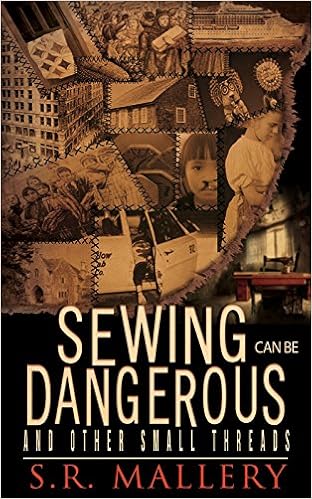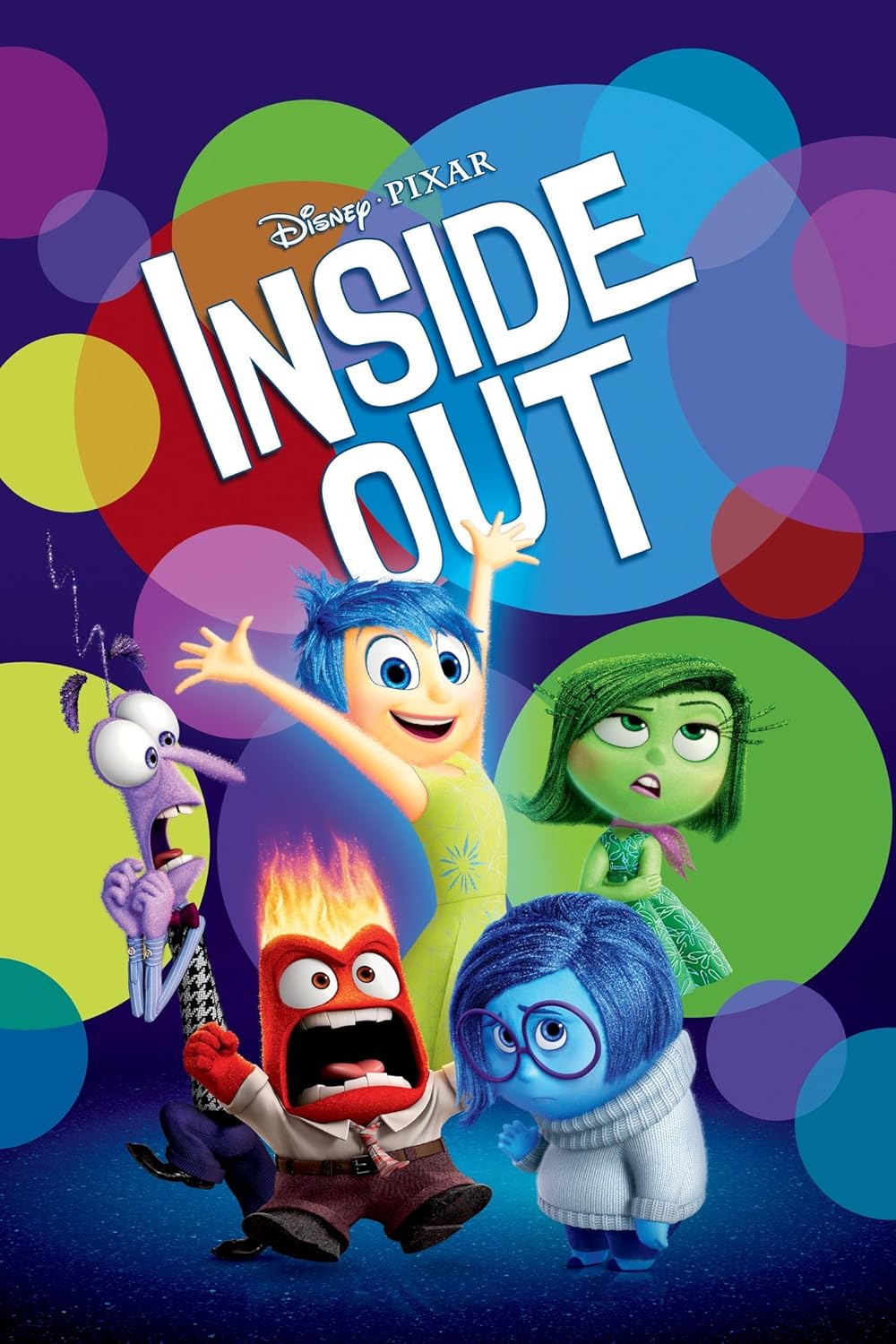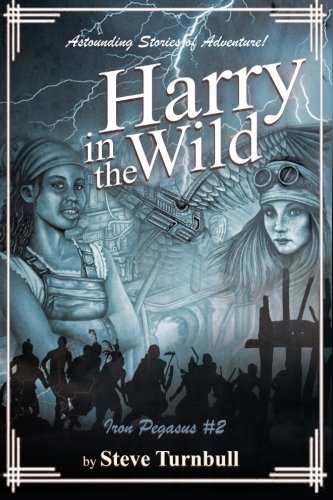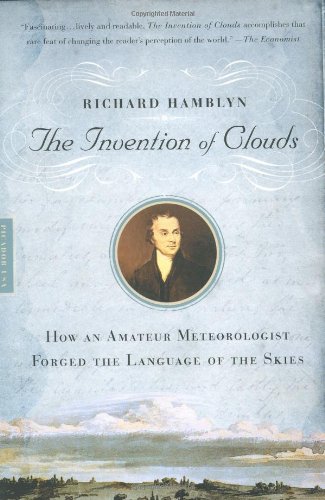Friday, July 31, 2015
Thursday, July 30, 2015
Wednesday, July 29, 2015
Breaking News (Carrot Ranch Flash Fiction Challenge)
Okay, this is a light-weight piece if you're looking for insightful commentary into current events.
I looked at the Carrot Ranch Flash Fiction Challenge this week:
July 29, 2015 prompt: In 99 words (no more, no less) write a story that is ripped from the headlines. Look at local, regional or global news. You can link to an article if you choose to. Put your own fictional twist on it to make it unique to your story-telling.
...and I wondered, how do we really know what's going on behind the electronic news feeds? Flash!
But... Fiction? I certainly hope so!
The news piece that follows is a single news item, warped and eventually returned to the stream in a twisted example of how to break the news.
__________________________________
Wall Street Weekly, 11:08:34am: Financial security firms announced today that the Chinese had rewired financial news feeds to post kute-kitteh pictures, flooding the Internet...
Asian Life Weekly, 11:08:35am: The Chinese government commented on news that cat photos were threatening to break the Internet...
Cat Life Weekly, 11:08:36am: Championship Siamese-cat breeders denied hairball-hacking attacks were behind closure of breeding services...
WSJ, (published) 11:08:37am: No hackers. No news. Move along...
I looked at the Carrot Ranch Flash Fiction Challenge this week:
July 29, 2015 prompt: In 99 words (no more, no less) write a story that is ripped from the headlines. Look at local, regional or global news. You can link to an article if you choose to. Put your own fictional twist on it to make it unique to your story-telling.
...and I wondered, how do we really know what's going on behind the electronic news feeds? Flash!
But... Fiction? I certainly hope so!
The news piece that follows is a single news item, warped and eventually returned to the stream in a twisted example of how to break the news.
__________________________________
Breaking News
Wall Street Journal (submitted online), 11:08:33am: Financial security firms revealed today that they had uncovered evidence of online attacks capable of rewriting news stories as they were posted over the wire...Wall Street Weekly, 11:08:34am: Financial security firms announced today that the Chinese had rewired financial news feeds to post kute-kitteh pictures, flooding the Internet...
Asian Life Weekly, 11:08:35am: The Chinese government commented on news that cat photos were threatening to break the Internet...
Cat Life Weekly, 11:08:36am: Championship Siamese-cat breeders denied hairball-hacking attacks were behind closure of breeding services...
WSJ, (published) 11:08:37am: No hackers. No news. Move along...
Monday, July 27, 2015
Dangerous Threads
Review: Sewing Can Be Dangerous and Other Small Threads by S.R. Mallery
Having story ideas, as any writer (or would-be writer) will tell you, is not a problem. Executing those marvelous ideas is what strains the ability of the author. One in a while, an author will challenge her own abilities even further, and elect to write several stories on a theme, kind of like running barefoot. It's possible, but the strain may show.
I suspect that's what happened here. There is not one story in this collection that isn't a clever idea, and many of them are well-developed. They each include an element of sewing or other craftly creation. And yet the execution is inconsistent.
The title tale, for example, is wonderful: an examination of the fate of two ladies caught in the Triangle Shirtwaist Factory Fire. The dialogue for the protagonist, a young Jewish girl fighting for recognition of her contribution in to her family's survival, and the Irish Catholic girl at the next machine, is real, and rings true with very little in the way of cliché.
Contrast this with the story of a young embroidery artist, Emma, drawn into the conflict between her mistress Lady Buckingham, and her mistress' husband. Buckingham (known as the lover of Queen Anne of France because of Dumas' tale of The Three Musketeers), his wife, and the common-born Emma all speak to each other in bad RenFaire dialogue, which quite spoiled for me what would otherwise have been an outstanding mediæval thriller.
Between these two extremes, all the other stories fall more or less in the middle. Each is a great idea, but lacks in some trivial or major way from fulfilling its potential. I found myself pulling and restoring stars as I read, depending on my wonder at the brilliant storylines, or my irritation at clichéd dialogue, stereotyped characters, or wooden action.
In the end, I decided to give the whole collection is 3.5 stars, with "Sewing Can Be Dangerous" at 5 stars, and "Emma At Night" at 2.
Would I read another story collection from this author? Sure! Because even though my inner editor winced at the tinny clashes with what might have been that I found in these pages, I still enjoyed the stories Mallery tells. A lot.
On second thought, that's worth another half-star.
Crushed (Carrot Ranch Flash Fiction Challenge)
Changing our perspectives challenges all of us, the more so as we got older. Perhaps it is because we have acquired so many set ways of looking at the world, or maybe it is a lack of emotional flexibility, that makes it harder as we age to give up our prejudices.
But youth has its own challenges in this regard. When I think of how easily my mind changed about things when I was a youngster, I realize that the pain was still there. It simply seemed that the world was changing me rather than I shifting my own perspective.
Buried deep in a deadlined project, I almost decided not to partake of the Carrot Ranch Flash Fiction Challenge this week, but something about the prompt kept scratching at the back of my mind:
July 22, 2015 prompt: In 99 words (no more, no less) write a story that has a shift in perspective. It can be a transition of one character or a change between character points of view. Go where the prompt leads, either technically or creatively.
What follows is wholly fictional, and yet it incorporates a real emotional shift from my own youth. My real teacher was named Turner, and in retrospect my crush had more to do with a bright red Mustang fastback than a pink silk shirt.
__________________________________
I learned nothing about science; I was daydreaming about kissing the new teacher, my hand brushing her pink silk sleeve.
Uncomfortable, I darted for the boys' restroom when class ended. Afterward, I saw her meeting young Mr. Woodsworth, my history teacher. His hand lightly rested on her sleeve as he bussed her cheek. Alas, all my dreams, crushed!
But youth has its own challenges in this regard. When I think of how easily my mind changed about things when I was a youngster, I realize that the pain was still there. It simply seemed that the world was changing me rather than I shifting my own perspective.
Buried deep in a deadlined project, I almost decided not to partake of the Carrot Ranch Flash Fiction Challenge this week, but something about the prompt kept scratching at the back of my mind:
July 22, 2015 prompt: In 99 words (no more, no less) write a story that has a shift in perspective. It can be a transition of one character or a change between character points of view. Go where the prompt leads, either technically or creatively.
What follows is wholly fictional, and yet it incorporates a real emotional shift from my own youth. My real teacher was named Turner, and in retrospect my crush had more to do with a bright red Mustang fastback than a pink silk shirt.
__________________________________
Crushed
Miss Pivik stole my breath and my heart away. Each boy in the science class was crushing on the substitute. Immense green eyes were made more enticing by the gleam in them when she wrote on the board: "Call me Irene."I learned nothing about science; I was daydreaming about kissing the new teacher, my hand brushing her pink silk sleeve.
Uncomfortable, I darted for the boys' restroom when class ended. Afterward, I saw her meeting young Mr. Woodsworth, my history teacher. His hand lightly rested on her sleeve as he bussed her cheek. Alas, all my dreams, crushed!
Wednesday, July 22, 2015
Tuesday, July 21, 2015
Monday, July 20, 2015
Saturday, July 18, 2015
Friday, July 17, 2015
Thursday, July 16, 2015
Silent Wonder (Carrot Ranch Flash Fiction Challenge)
The middle days of a writing month are the driven days for me. I wake with thoughts of what I want to write, sit down before the keyboard and begin, and lift my head hours later to be delighted or dismayed at my progress toward the finish line. When I lie down to sleep, snippets and tags of my project disturb my slumber.
So I gratefully turned to the Carrot Ranch Flash Fiction Challenge this week (after a week's hiatus) to relieve some of the pressure. And Charli came through for me with a prompt that seems custom-designed to take me away from the grind of producing words on a deadline:
July 15, 2015 prompt: In 99 words (no more, no less) write a story about a breathless moment. Write about life.
There are so many breathless, life-affirming moments in my life. Merely reviewing my options for this week's flash would have been a joy and wonder. But one memory surged to the top of the list, and unlike all the others, it is the only one I did not share with my spouse.
____________________________________________
Here the passenger sat in front, isolated from the pilot. There was no one to share my breathless wonder as the tow released and the craft began drifting downward.
The key experience in an unpowered aircraft is silence. No engine means no growl of power. All you hear is the airflow hissing over the wings as it wheels gracefully over the earth.
So I gratefully turned to the Carrot Ranch Flash Fiction Challenge this week (after a week's hiatus) to relieve some of the pressure. And Charli came through for me with a prompt that seems custom-designed to take me away from the grind of producing words on a deadline:
July 15, 2015 prompt: In 99 words (no more, no less) write a story about a breathless moment. Write about life.
There are so many breathless, life-affirming moments in my life. Merely reviewing my options for this week's flash would have been a joy and wonder. But one memory surged to the top of the list, and unlike all the others, it is the only one I did not share with my spouse.
____________________________________________
Silent Wonder
At 19, I had never flown in an airplane. Yet there I was in California's Central Valley, signing up to ride in a glider. My spouse, who suffers from inner-ear disturbances, elected to stay on the ground.Here the passenger sat in front, isolated from the pilot. There was no one to share my breathless wonder as the tow released and the craft began drifting downward.
The key experience in an unpowered aircraft is silence. No engine means no growl of power. All you hear is the airflow hissing over the wings as it wheels gracefully over the earth.
Wednesday, July 15, 2015
Tuesday, July 14, 2015
Monday, July 13, 2015
Sunday, July 12, 2015
Saturday, July 11, 2015
Joy In the Midst of Trauma
Review: Inside Out (Pixar)
If you are schmaltzphobic, you should avoid this movie at all costs! I say that right at the start, because the whole purpose, theme, and raison d'être of Inside Out is to put the audience in touch with their emotions, in the most direct, tear-jerking and belly-laugh provoking roller-coaster way they can. And, boy! can the Pixar writers wring emotions!
I had wanted to see this film ever since I saw it reviewed in the Wall Street Journal. When was the last time you saw a review of an animated movie in WSJ? I sensed there might be something different about this one, and I wanted to experience it directly.
Oh, but not in a theater full of screaming kids or snarking teenagers, no way. I might have waited to catch it on Prime, or cable-on-demand, except for Hollie Fortkamp.
Hollie found me in my writing corner at Chick-fil-A, and literally twisted my arm to come along with a small group to a mid-week late-afternoon matinee. It helped that Hollie had been before at a similar time of day, and could reassure me the theater hadn't been chock-a-block with underage patrons when she went.
I'm glad she did persuade me! I knew this was a good decision as soon as the opening Pixar short, Lava, played. In three minutes, this short had me first awed at scenery and smiling at the conception of a singing volcano, then sniffing back tears, and finally, openly weeping. Good thing I had a full packet of Kleenex. And this was just the leader; the main attraction would help empty that packet!
Inside Out tells the story of an 11-year-old only child, Riley, whose family moves her from Minnesota to San Francisco. It centers around five of Riley's core emotions: Joy, Sadness, Fear, Disgust and Anger, with Joy as her premier emotion. At first, as the emotional range of a baby, toddler, or even pre-teen would be, all of these emotion characters are one-note simple, but then they mature, developing depth and range as Riley experiences this life-changing shift.
When an adult character's controlling emotion committee is shown, the same five characters are present in "grown-up" form. We meet Riley's Mom's Sadness, Joy, Fear, Disgust, and Anger. For Mom, Sadness seems to be central emotion—yet, as we learn later in the film, this seems to be more akin to nostalgia and regret than anything else. Riley's Dad has a committee led by Anger and Fear, adult-muted into Assertiveness and Concern—still, the same five are present.
The movie is visually lush, with layers of text and subtext even in the illustrated backgrounds of scenes. For example, the subconscious is drawn as a subterranean dungeon in which Riley's darkest fears are incarcerated. Riley's memories of Minnesota are full-color and full of sunshine, but in her current experience of San Francisco, grays and fog predominate.
The angst and regret are never allowed to take over. In the context of the film, Joy still holds sway, even when she is lost in the memory stacks. At the climax of the story, when Riley's personality is integrated and her emotions "operate like a team," we are given a perfect visual for it.
At least I think I saw it. I was pretty teary by then.
Liner Notes:
- The State Farm commercial on TV that shows Riley's Anger bumping Fear out of the way to make the hockey goal must be an extra scene from the cutting-room floor. I got a bigger kick out of the passing comment of Disgust in the similar scene from the movie: "Let's not get all smelly out there this time, okay?"
- There is much going on at adult level that will pass right over the little viewers' heads. However, there is one sad scene that may leave small children weeping. We had kiddie-voices piping up all around us in the theater, "But Mom! What happened to Bing-Bong? He'll be okay, right?"
- Don't leave without watching the closing credits. Many of the other bit-characters have their emotional committees revealed in flash animations as the credits scroll by.
- I don't know if anyone else was disturbed by the totally-brown eyes of both Riley's parents gazing into her bright blue ones. Interesting choice by the illustrators.
- I got a chuckle at the swipe-right and swipe-left motions for the memory globes to run and reverse the display.
Friday, July 10, 2015
Thursday, July 9, 2015
Wednesday, July 8, 2015
Tuesday, July 7, 2015
Sunday, July 5, 2015
Hippos and Steam-Powered Dogfights
Review: Harry In the Wild (Iron Pegasus 2) by Steve Turnbull
Harriet (Harry) and Khuwelsa (Sellie), the uncommon Edgbaston sisters, discover a dead German from a Zeppelin crew at their secret watering hole during a shakedown flight in the steam-powered ornithopter Pegasus. They decide they need to carry the body to the German base and deliver him to Lieutenant Schmidt, the officer who helped them escape in Harry Takes Off.
The dead man is clutching a hippo tooth, and when the Pegasus then comes across a raft of slaughtered hippopotamuses, Harry sees red. She is determined to find out why the Germans are harvesting hippo teeth.
Khuwelsa, none too sure she wants to get anywhere near the Germans, is more concerned about what their father will say about their unannounced diversion—especially when Harry's plan calls for Sellie to disguise herself as a native, and walk into the German base wrapped only in the thin kitenge the East African village women wore.
And thus another steam-powered adventure for the Edgbaston girls begins. Khuwelsa gets to lead in this tale, and discovers the pros and cons of being the "front man", while still managing to be a compleat engineer.
No, that's not a typo. Sellie is the quintessential mechanic, designer and scientific user of the Pegasus and its power plant. Harry only flies the machine, although her "only" is significantly better than most men's flying skills.
As always, it's Harry who drives the pair to embark on adventures, and Sellie who acquiesces to her lead. The mayor of a small town is astounded at the girls' decision to pursue the German Zeppelin whose crew killed the hippos and, incidentally, also burned the town. Harry asks him:
“Would I be right in thinking you’ve been attacked by a Zeppelin crewed by German airmen?”
The entire group looked astonished. “How did you know?” said the mayor.
“We’ve been on their tail for a while.” Khuwelsa put her hand over her face to hide her smile at Harry’s exaggerated account of the situation.
The mayor looked at Harry, then Khuwelsa, then the Pegasus. “You’re chasing them?”
This is a worthy successor to the first Iron Pegasus novel. It's short for a novel (110 pages), but you won't feel it. Every page is packed with action, and the story moves swiftly (and hair-raisingly) to a smashing conclusion.
I can't wait for Volume 3!
Saturday, July 4, 2015
RIP Nimitz, July 4th, 2015
Nimitz was our Fearless Leaper. Of our three cats, he was the one who ran to jump into our laps, ran to jump from floor to the top of the cat tree, ran down the stairs to chase kibble.
His litter-mate Sisu broke teeth, but it was Nimitz who chewed on everything—catnip stalks, cardboard, Milton crackers, jay tail-feathers (all he could catch), the other cats' dinners.
No attached toy was safe from him: Nimitz discovered early how to chew loose the dangled mouse from its string. He would track back along any cat teaser to find the hand that held it, and leap for the easy catch.
Pounce is the ornery one, Sisu the lazy one, but Nimitz was the sweet one. When he grew too heavy to lie in my lap, he would snuggle against my thigh, and drape his chin over my knee.
Just ten days ago, he began to lose interest in his food. Instead of having to drive him away from Sisu's dish, we began to see him walk away to sit on his favorite piece of cardboard (an old pizza box) and watch disconsolate while his brother finished his dinner. He ate less and less, and we started to need to carry him from his easy chair in the back room at dinner time.
He lost weight; his once-burly haunches withered over a few days time. He needed professional help. Nimitz went to the local pet hospital, where he was diagnosed as severely dehydrated. One day of intravenous fluids gave us hope. When we visited him the next morning, here again was our bright-eyed, curious cat.
Then they found the mass in his belly. He was spewing back all the fluids he took by mouth, and it was plain that it was a fast-growing source of pain and distress for our sweet boy. We chose to end his pain.
Tomorrow he will go to the memorial site where all our Northern California cats are destined to rest. It's a lovely hillside spot, with a marker rock that we can see clearly from the road as we pass by. He joins his litter-mate Saskia there.
He leaves a huge hole in our hearts.
His litter-mate Sisu broke teeth, but it was Nimitz who chewed on everything—catnip stalks, cardboard, Milton crackers, jay tail-feathers (all he could catch), the other cats' dinners.
No attached toy was safe from him: Nimitz discovered early how to chew loose the dangled mouse from its string. He would track back along any cat teaser to find the hand that held it, and leap for the easy catch.
Pounce is the ornery one, Sisu the lazy one, but Nimitz was the sweet one. When he grew too heavy to lie in my lap, he would snuggle against my thigh, and drape his chin over my knee.
Just ten days ago, he began to lose interest in his food. Instead of having to drive him away from Sisu's dish, we began to see him walk away to sit on his favorite piece of cardboard (an old pizza box) and watch disconsolate while his brother finished his dinner. He ate less and less, and we started to need to carry him from his easy chair in the back room at dinner time.
He lost weight; his once-burly haunches withered over a few days time. He needed professional help. Nimitz went to the local pet hospital, where he was diagnosed as severely dehydrated. One day of intravenous fluids gave us hope. When we visited him the next morning, here again was our bright-eyed, curious cat.
Then they found the mass in his belly. He was spewing back all the fluids he took by mouth, and it was plain that it was a fast-growing source of pain and distress for our sweet boy. We chose to end his pain.
Tomorrow he will go to the memorial site where all our Northern California cats are destined to rest. It's a lovely hillside spot, with a marker rock that we can see clearly from the road as we pass by. He joins his litter-mate Saskia there.
He leaves a huge hole in our hearts.
Friday, July 3, 2015
Time for a Short One
Somewhere between the flash fiction and the novel lies a once-ubiquitous fiction form: the short story. Collected into fiction magazines and anthologies, these stories paid the bread-and-butter for authors in the Golden Age.
Now, with the growth of self- and independent-house-publishing, or perhaps with the disappearance of many of the magazines that once paid for writers to craft such tales, the short story is getting harder to find. To balance this dearth, though, many anthologies and collections that once were available only on paper are being re-released as e-books.
The Acts of 1 (Jon de Silva)
I was pleased to see the release of this collection of short stories from de Silva, author of the enjoyable time-travel novel Rickshaw, New Mexico. Like that novel, most of the stories in this collection have a theme of asynchronicity: either time travel or time-shifts are at the heart of the action. Powerful emotional tension and thoughtful handling of the out-of-time characters help raise these seven tales above the ordinary.
Of all seven, the two not listed in the Amazon description—and the two that do not deal with time-twisting—turned out to be my favorites. I particularly enjoyed the story "A Wish for Sarah," in which the anachronism is an old-fashioned name-tag on a nurse in a cancer ward. De Silva presents the choices we all make in living by giving us Sarah, a dying woman who has a short time left to make those choices for herself, her husband and her friend. Also satisfying was "The Waiting Room." We all love to see others get their comeuppance!
I like stories that can wring emotional response. So I'll warn you—my 5-star rating for this collection is the equivalent of the warning: Have a Kleenex available!
Ingathering (The Complete People Stories of Zenna Henderson)
I was a teenager just discovering the power of the short science fiction story by the likes of Sturgeon and Bradbury when a kind librarian put a collection of stories by Zenna Henderson, The Pilgrimage, into my hands, and I met the People for the first time. Refugees from a Home that demolished itself, the People live apart from others in the remote reaches of an Arizonan desert canyon, and in scattered other communities elsewhere.
Like Superman, another alien who fell to Earth in the same era, they possess powers they brought from that other world. Unlike Superman, however, their powers must be hidden from a world that is too ready to reject the odd and different. They fly, and lift their broken-down jalopies above the trees. They bring molten metal and artesian water flowing from beneath the earth. They converse silently and Share their powerful memories.
Also unlike Superman, the People live ordinary lives around these powers. There is sibling rivalry, and naughtiness in the back of the classroom, and despair, and the innocence of children. And when I found Henderson's second collection of People stories, The People: No Different Flesh, the title made it obvious why. The People are people. They are us, plus.
To a geeky teen in an era when to be a geek (indeed, to be an ardent reader!) was to be an object of scorn, the People were a wonderful promise of community somewhere, a hope that I could be an Insider there because of being an Outsider here.
Henderson's power was to bring that feeling to a wide variety of out-group readers:
A wide variety of people have embraced and recommended these stories: Jews, Wiccans, Latter-day Saints and other Christians. People in the GLBT community have felt unique kinship with the People, probably not realizing that Muslim readers have felt the same way. —from an essay on Adherants blog
Holding Wonder (Zenna Henderson)
Many of Henderson's stories of the People have a teacher's voice somewhere. This is not surprising; Zenna Henderson taught elementary school in Arizona. She brought that desert schoolroom esthetic into almost every story she wrote.
Holding Wonder is one of two collections of tales not specifically about the People (although The Indelible Kind crosses over.) Many of the stories, including You Know What, Teacher? share the child's or teacher's point of view of the schoolroom or playground. Here again, though, the two stories that have resided in my heart for over fifty years involve neither school nor student.
Crowning Glory presents a North America in which the almost-universal fashion is for females and males alike to wear their hair cropped close and shaven into patterns. The protagonist is an odd girl in this culture, clinging to her undyed waist-length hair despite the teasing of her friends and the inconvenience of caring for it. How she becomes the invited guest of the alien visitors—and why—is a prime example of writing power.
Love Every Third Stir has a classic feel to it. For a long time, I was convinced this had been made into a Twilight Zone episode, but it had not. It's just a very visual presentation. The twist at the end is a real zinger!
Liner Notes:
- Ingathering combines the two collections of the People stories, adding some story-to-story narrative linkage to the first book. Since I had lost my original paperbacks along the way, I was happy to add this double collection back into my library.
- There is no Kindle edition of any of the Zenna Henderson books yet.
Thursday, July 2, 2015
Running a Fever (Carrot Ranch Flash Fiction Challenge)
The writer pursuing the craft is as solitary as a lone runner in the desert. Like that runner, leaving others behind to seek his own connection to the world, he may achieve a blissful union with reality, or stumble and fall painfully.
And being solitary, the writer must self-rescue or perish; there is no one else with him on this journey through pain to enlightenment.
There are minor problems every runner must endure, whether solitary or in a crowded field: heat or cold, shoe-stones and sock-rumples, rashes and barking canines. Every writer has minor problems as well, but the writer is solitary even when surrounded by others pacing him; his field is populated only by those he creates and animates.
So when Charli Mills threw down the Carrot Ranch Flash Fiction Challenge today, I knew I must respond, even though I am working on a Camp NaNoWriMo project this month:
July 1, 2015 prompt: In 99 words (no more, no less) write a story that includes the phrase, “Man, it’s a hot one.” You can choose a gender neutral replacement for the slang, “man” or any other general address. The phrase can lead, end or show up in the middle of the story. If the prompt leads you to a creative idea to alter the phrase, do it! And stay cool this week!
This diversion is my draught of cold water after my writerly "running in the desert for hours" this morning.
_______________________________
Earlier this morning, the air in camp still held night-coolness. I called to anyone in earshot, "I'm just going for a short run!" Dry dirt under my trainers, I took off at a steady pace.
Muscles warmed, and the air—man, it's going to be a hot one! Insects buzzed around me in the desert morning. A road-runner across the pan challenged me to race, and I was winning! Until my heel rolled.
It's been hours now. I lie broken, just praying someone heard me leave camp.
And being solitary, the writer must self-rescue or perish; there is no one else with him on this journey through pain to enlightenment.
There are minor problems every runner must endure, whether solitary or in a crowded field: heat or cold, shoe-stones and sock-rumples, rashes and barking canines. Every writer has minor problems as well, but the writer is solitary even when surrounded by others pacing him; his field is populated only by those he creates and animates.
So when Charli Mills threw down the Carrot Ranch Flash Fiction Challenge today, I knew I must respond, even though I am working on a Camp NaNoWriMo project this month:
July 1, 2015 prompt: In 99 words (no more, no less) write a story that includes the phrase, “Man, it’s a hot one.” You can choose a gender neutral replacement for the slang, “man” or any other general address. The phrase can lead, end or show up in the middle of the story. If the prompt leads you to a creative idea to alter the phrase, do it! And stay cool this week!
This diversion is my draught of cold water after my writerly "running in the desert for hours" this morning.
_______________________________
Running a Fever
Cooking in my skin, I stare helpless at a sun just inches overhead.Earlier this morning, the air in camp still held night-coolness. I called to anyone in earshot, "I'm just going for a short run!" Dry dirt under my trainers, I took off at a steady pace.
Muscles warmed, and the air—man, it's going to be a hot one! Insects buzzed around me in the desert morning. A road-runner across the pan challenged me to race, and I was winning! Until my heel rolled.
It's been hours now. I lie broken, just praying someone heard me leave camp.
Inventing Clouds
Review: The Invention of Clouds by Richard Hamblyn
You call the wispy high clouds of the December sky “cirrus”. So does the German, Spaniard, Russian, Afrikaner… We have a common language for speaking of clouds due to a remarkable Quaker chemist, Luke Howard, who codified and named clouds (in Latin, the scientific language then and now) according to the behavior he had observed.
In The Invention of Clouds, Richard Hamblyn tells us not only about the life, times and work of this amateur meteorologist, but also about his remarkable colleagues in science.
Howard lived in London at the end of the 18th century, when the intellectual life of Europe was aboil with new theories of natural philosophy—science—and young intellectuals found their way to the coffee-house to debate their favorites in a heady atmosphere of stock trading, tobacco-smoking, drug experimentation and science.
The Royal Society was nearly one hundred years old, and was essentially closed to the Quaker Howard. In any case, it was the society for “old fogies”; the coffee-house set formed dozens of societies of their own. Howard was “discovered” by Alexander Tilloch, a Scottish-born publisher and magazine editor, who then introduced his work to the Askesian Society, a group founded by three Quakers specifically as a debating club. The Askesians preferred a more interactive inquiry than the sedate Royal Society functions. Howard’s first presentation of “On Modifications of Clouds” was made in this hurly-burly venue.
Hamblyn makes clear that it is not only Howard’s work that is seminal in this tale. The birth of the scientific journal (Alexander Tilloch), the explosion of interest in science (the Askesian and other societies), the growth of the stock trade as a basis for endeavor, even the rise of the naturalist school of painting, all have their place.
Altogether, The Invention of Clouds is a thoroughly fascinating glimpse of the transformational second wave of communication. For those of us surfing the third wave, it has a strongly familiar flavor.
Howard lived in London at the end of the 18th century, when the intellectual life of Europe was aboil with new theories of natural philosophy—science—and young intellectuals found their way to the coffee-house to debate their favorites in a heady atmosphere of stock trading, tobacco-smoking, drug experimentation and science.
The Royal Society was nearly one hundred years old, and was essentially closed to the Quaker Howard. In any case, it was the society for “old fogies”; the coffee-house set formed dozens of societies of their own. Howard was “discovered” by Alexander Tilloch, a Scottish-born publisher and magazine editor, who then introduced his work to the Askesian Society, a group founded by three Quakers specifically as a debating club. The Askesians preferred a more interactive inquiry than the sedate Royal Society functions. Howard’s first presentation of “On Modifications of Clouds” was made in this hurly-burly venue.
Hamblyn makes clear that it is not only Howard’s work that is seminal in this tale. The birth of the scientific journal (Alexander Tilloch), the explosion of interest in science (the Askesian and other societies), the growth of the stock trade as a basis for endeavor, even the rise of the naturalist school of painting, all have their place.
Altogether, The Invention of Clouds is a thoroughly fascinating glimpse of the transformational second wave of communication. For those of us surfing the third wave, it has a strongly familiar flavor.
Liner Notes:
- Other books of interest about this period are The Lunar Men by Jenny Uglow, about this Birmingham science society of Luke Howard’s day (which included James Watt, Matthew Boulton and Charles Darwin’s grandfather Erasmus); and A Conspiracy of Paper by David Liss, a fictional account of the coffee-house trade in stocks in the mid-1700s.
- Lunar Men is not available for Kindle, but the other two are.
Subscribe to:
Posts (Atom)





















